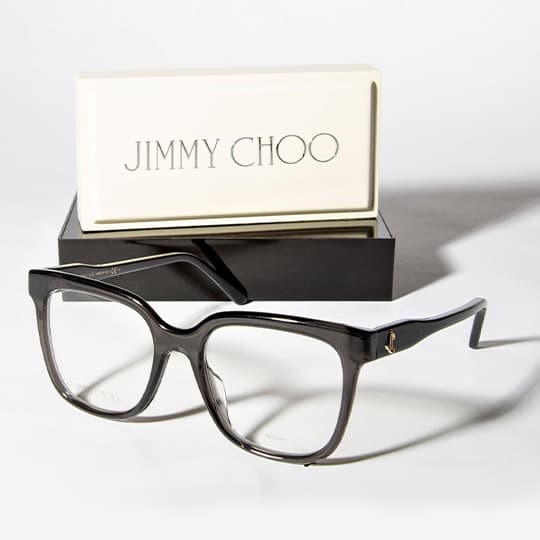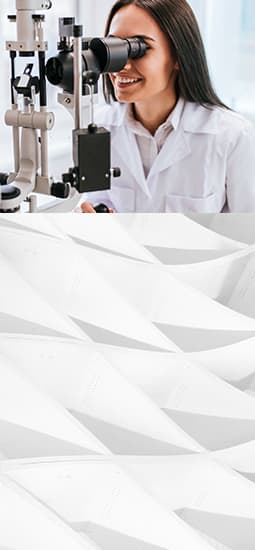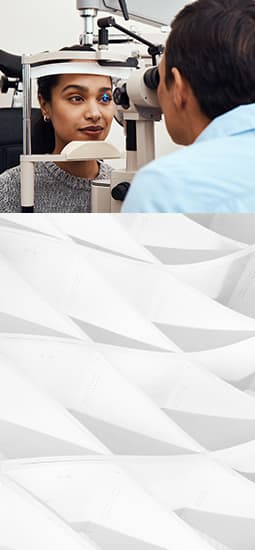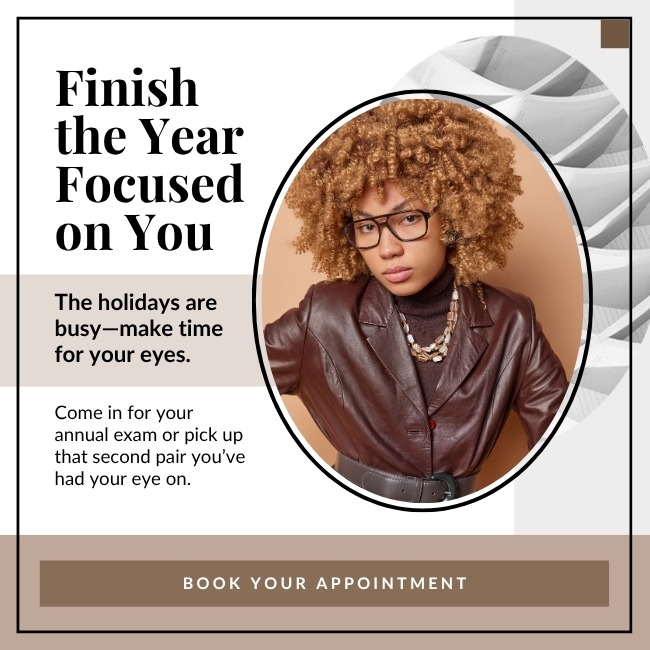Dry Eye Care from Diagnosis to Treatment
Dry eye is a chronic condition that occurs when the eyes don’t produce enough quality tears to properly lubricate the eye’s surface. While it can cause irritating symptoms and affect your quality of life, dry eye also increases your risk of eye infection.
This condition can make reading, working on the computer, and spending time outdoors a challenge. Our team uses innovative technology to identify the cause of dry eye and provide personalized care to help you find effective relief.
Start your journey to better eye comfort and clarity with an eye exam.
Book Appointment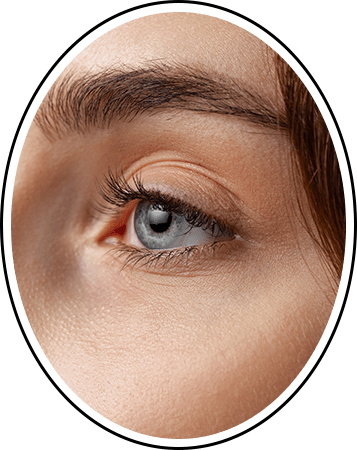
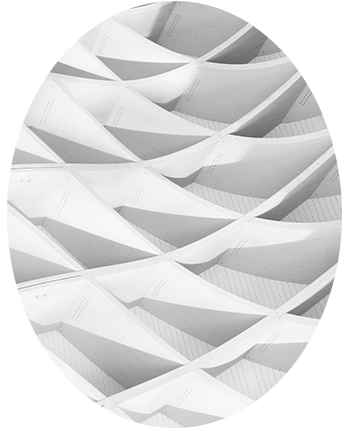
Dry Eye Symptoms
Dry eye occurs when there’s a dysfunction with one of the layers of the tear film. The tear film helps hydrate, nourish, and protect the eye, keeping it healthy and seeing clearly.
Dry eye can also cause several uncomfortable symptoms, including redness, scratchiness, burning, light sensitivity, overly watery eyes, mucus, and blurry vision.
Meibomian Gland Dysfunction & the Tear Film
The tear film is a thin layer of tears spread across your eye’s surface every time you blink. It has 3 distinct layers that serve specific functions:
- An inner mucus layer that helps the tear film stick to the eye.
- A middle aqueous (watery) layer that helps flush out debris and bacteria.
- An outer oil layer that helps prevent tear evaporation and keeps it stable.
The oily layer is produced in the meibomian glands, which sometimes become blocked, leading to meibomian gland dysfunction (MGD), a common cause of dry eye.
Our Dry Eye Diagnostics
Understanding the cause of your dry eye is essential to providing effective relief. We use various diagnostic technologies to examine your eyes and determine an appropriate treatment plan.
There are many ways to examine dry eye and 2 of the diagnostic tools we use are the Lumenis Antares device and an automated tear breakup time (TBUT).
Using automation in our dry eye diagnosis assists us in examining your eyes efficiently and accurately.
Lumenis Antares
The Lumenis Antares helps us diagnose and manage dry eye with real-time observations. It visualizes the oil glands in the eyelids.
Antares detailed information about the corneal surface and tear film layers, helping us understand the cause of your dry eye and design a personalized treatment plan.
The Lumenis Antares is a light-based procedure that only takes about 15 minutes from start to finish.
Automated TBUT
TBUT is a crucial diagnostic tool for dry eye. It measures the time it takes for your tears to evaporate from your eyes, evaluating how well they keep your eyes moist.
This assessment was traditionally done manually, but the automated TBUT makes the process more accurate and consistent, leading to better diagnosis and management.
Risk Factors for Dry Eye
While dry eye can affect anyone, certain risk and environmental factors can make dry eye more likely to occur, including:
- Age, especially when over 65
- Hormonal changes like those caused by menopause
- Certain medications like antihistamines and birth control
- Environmental conditions like dry, windy climates, air conditioning, and smoke exposure
- Autoimmune conditions, such as diabetes or rheumatoid arthritis
- Digital device use and eye strain
- Long-term contact lens use or laser eye surgery
Our Dry Eye Treatments
If you have dry eye, we offer several treatment options to help alleviate your symptoms.
Many of these treatment options can be used together for more effective relief. Depending on the severity or cause of your dry eye, you may need multiple sessions to get the desired results.
We proudly provide OptiLIGHT, OptiPLUS, meibomian gland expression, and medicated eye drops.
OptiLIGHT by Lumenis
OptiLIGHT by Lumenis is a light-based, noninvasive treatment done in the area below the eyes to manage dry eye. The first and only IPL FDA-approved for dry eye management.
The treatment is safe, gentle, and is backed by more than 20 clinical studies.
OptiLIGHT uses precise pulses of light to reduce the inflammation that is typically associated with dry eye disease, improve tear break-up time, and increase meibomian gland functionality.
OptiPLUS
OptiPLUS by Lumenis uses dual-frequency RF technology to manage dry eye caused by MGD. This FDA-cleared technology applies heat across several layers of the skin to help improve meibomian gland function and boost collagen production.
Meibomian Gland Expression
Meibomian gland expression is a therapeutic technique that involves applying gentle pressure to the eyelids, helping release blockages, and allowing for better oil flow. It helps restore gland function and reduce dry eye symptoms.
Medicated Eye Drops
Medicated eye drops can be vital for relieving dry eye discomfort. They usually work by reducing inflammation and enhancing tear production.
Over-the-counter artificial tears can also offer relief by supplementing natural tear production and adding moisture to the eye.
Discuss Dry Eye with Us
Dry eye can make everyday activities a challenge. Our diagnostic technology can help us understand the cause of your discomfort and explore personalized treatment options.
Don’t let dry eye hold you back. Schedule an appointment to find relief and restore comfort to your eyes.
Book AppointmentVisit Our Location
Center St
- Phone: 402-614-3200
- Email: tech@legacyeyecare.com
- 16949 Lakeside Hills Plaza, Suite 101
- Omaha, NE 68130
Hours
- Monday: 8:00 AM – 5:30 PM
- Tuesday: Closed
- Wednesday: 8:00 AM – 5:30 PM
- Thursday: 8:00 AM – 4:30 PM
- Friday: 8:00 AM – 5:30 PM
- Saturday: 8:00 AM – 2:00 PM
- Sunday: Closed
Our Services
Our Brands




